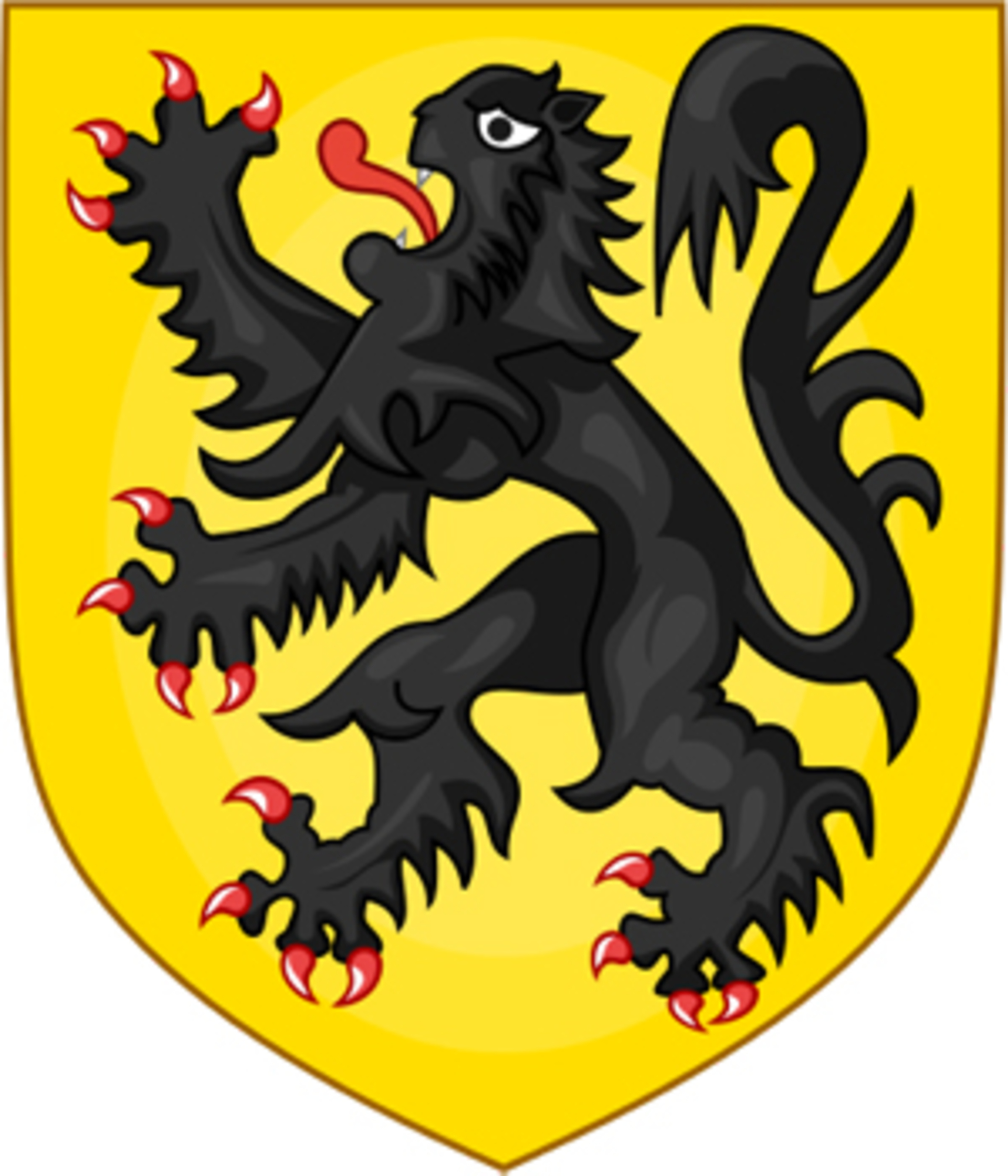The County of Flanders
The Counts of Flanders were formally vassals of the King of France ever since the French king gave his son-in-law a dowry in the form of territory – Flanders – in the second half of the 9th century, with the intermediation of the pope. The County of Flanders covered an area from the coast to the river Scheldt in the west, and its most developed cities were Bruges, Gent, and Ypres.

Coat of arms

Shirt
| Position | First name | Last name | Mjesto rođenja | Like | Dislike | |
|---|---|---|---|---|---|---|
| GK | Sammy | BOSSUT | Tielt |
0 |
0 |
|
| GK | Thomas | DIDILLON | Seclin |
0 |
0 |
|
| GK | William | DUTOIT | Roncq |
0 |
0 |
|
| DC | Raphaël | VARANE | Lille |
12 |
1 |
|
| DRC | Brandon | MECHELE | Bredene |
0 |
0 |
|
| DRC | Sebastian | DEWAEST | Poperinge |
0 |
0 |
|
| DLC | Jan | VERTONGHEN | Saaint Niklaas |
12 |
2 |
|
| DLC | Nicolas | LOMBAERTS | Brugge |
0 |
0 |
|
| DLC | Rick | VAN DRONGELEN | Axel |
0 |
0 |
|
| DR | Mathieu | DEBUCHY | Fretin |
0 |
0 |
|
| DLC/ML | Jelle | VAN DAMME | Lokeren |
0 |
0 |
|
| DL | Laurens | DE BOCK | Dendermonde |
0 |
0 |
|
| DL/ML | Artur | MASUAKU | Lille |
0 |
0 |
|
| DRC/DMC | Benjamin | PAVARD | Maubeuge |
7 |
0 |
|
| DC/DMC | Bjorn | ENGELS | Kaprijke |
2 |
1 |
|
| DMC | Adrien | TAMEZE | Lille |
0 |
0 |
|
| DMC/DC | Leander | DENDONCKER | Passendale |
1 |
0 |
|
| MC | Birger | VERSTRAETE | Oostende |
0 |
0 |
|
| MC | Nabil | BENTALEB | Lille |
1 |
0 |
|
| MC | Vadis | ODJIDJA OFOE | Gent |
0 |
0 |
|
| MC | Yohan | CABAYE | Tourcoing |
1 |
1 |
|
| AMC | Thomas | BUFFEL | Brugge |
0 |
0 |
|
| AMRLC | Anthony | KNOCKAERT | Roubaix |
0 |
0 |
|
| AMRLC | Brecht | DEJAEGERE | Handzame |
0 |
0 |
|
| AMRLC | Kevin | DE BRUYNE | Drongen |
23 |
0 |
|
| AMRL | Martin | TERRIER | Armentières |
0 |
0 |
|
| FRLC | Alassane | PLEA | Lille |
0 |
0 |
|
| FRLC | Andre | AYEW | Seclin |
1 |
0 |
|
| FRLC | Divock | ORIGI | Ostend |
3 |
1 |
|
| FRLC | Maxime | LESTIENNE | Kortrijk |
0 |
0 |
|
| FC | Obbi | OULARE | Waregem |
0 |
0 |
|
| FC | Tom | DE SUTTER | Gent |
0 |
0 |
(Today western Belgium, part of northern France and southern Netherland)
By creating the county of Flanders, the West Franks kings attempted to secure the northern borders of their country which were often attacked by Vikings, but the counts themselves, over time, gained independence from the central rule from Paris. Although they were politically united under the supreme rule of the Count of Flanders, the citizens of Flanders were far from homogenous. While in the southern parts mostly Romance languages held sway, in the north, which was also far more populous, forms of Germanic languages were dominant, and the coastal regions were the home to people of Saxon or Frisian origins.
The accelerated economic and social development of the cities imposed more and more the concept of social organization which was different from the feudal one, and the Flemish cities in particular developed faster than the lumbering feudal states. The cloth industry, which mostly collaborated with English wool merchants, produced high-quality textiles. Merchants from all countries started coming to Flanders, and sea trade that went through Bruges, made the city the center of European trade. Flanders profited from its geographical position as it enabled it to become a mediator between the Mediterranean, Scandinavian, and Baltic countries, as well as England and Rhineland, especially Cologne. In order to protect their independence, Counts of Flanders often went to war against the Kings of France, but they found a greater problem in the attempts of rich Flemish cities to become independent.
Sources
- Fernard BRAUDEL, Civilizacije kroz povijest, Zagreb, 1990.
- ''County of Flanders'', https://en.wikipedia.org/wiki/County_of_Flanders
- ''Feudalizam'', http://www.enciklopedija.hr/Natuknica.aspx?ID=19403,
- ''Flanders'', http://www.britannica.com/place/Flanders-medieval-principality-and-historical-region-Europe
- 1350.
- Coat of arms: http://www.crwflags.com/fotw/flags/be-vlg.html
